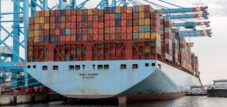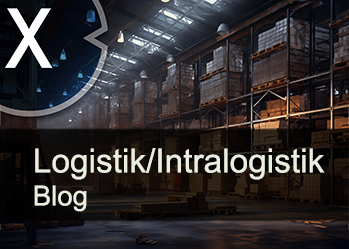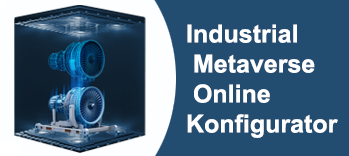Container solutions for food security in times of crisis: From grain reserves to fully integrated food production
Xpert pre-release
Language selection 📢
Published on: September 21, 2025 / Updated on: September 21, 2025 – Author: Konrad Wolfenstein

Container solutions for food security in times of crisis: From grain reserves to fully integrated food production – Image: Xpert.Digital
Germany's emergency supplies: Why you would only get raw grain in an emergency
Blackout in Germany: How outdated our food supply really is
Basics of German food emergency preparedness
Germany has been preparing for potential supply crises for decades, but the current approaches date back to the 1960s and show significant weaknesses. The government's emergency reserves currently comprise approximately 800,000 tons of food stored at over 150 secret locations. These stocks consist primarily of the Civilian Emergency Reserve of rice, peas, lentils, and condensed milk, as well as the Federal Grain Reserve of wheat, rye, and oats.
The central problem with this conventional food storage system lies in its lack of practical suitability for modern crisis situations. Private households no longer have the infrastructure they had in the 1960s for processing raw staple foods. While government reserves are theoretically intended to ensure a daily meal for several weeks, concepts for the practical implementation of this supply under crisis conditions are lacking.
The Federal Court of Auditors' criticisms in 2011 and 2019 confirm this assessment: The stockpiles are based on outdated standards, are partially affected by pest infestation, and are difficult for private households to process. At the same time, high costs arise from storage, administration, and regular renewal of emergency stockpiles.
Suitable for:
- Floods, heat-related deaths, tornadoes, and billions in damage: Germany's new crisis reality is here
Weaknesses in food processing in times of crisis
The German food supply system is highly specialized and dependent on functioning infrastructure. Modern mills, bakeries, and processing plants require a stable power supply, functioning transport routes, and complex supply chains. In crisis situations such as natural disasters, prolonged power outages, or armed conflicts, these systems can fail completely.
A particularly critical issue is the dependence on large-scale, centralized facilities. If centralized mills or bakeries fail, entire regions can no longer be supplied with processed food, even if there is sufficient raw grain available. The coronavirus pandemic and the war in Ukraine have already shown how quickly supply chains can collapse.
To make matters worse, most large bakeries and food processing companies operate on a just-in-time basis and maintain only minimal storage capacity. In the event of supply shortages, they lack both the raw materials and the processing capacity needed for a rapid response.
Container-based solutions for decentralized food production
Mobile container solutions offer an innovative approach to overcoming these weaknesses. Various manufacturers have already successfully developed production facilities in standardized 20-foot containers, enabling a complete processing chain from raw material storage to the finished product.
For example, an Austrian supplier has built grain mills in 20-foot containers that achieve a milling capacity of around 20 tons within 24 hours. These systems are modular in design and can process different types of grain without complex system conversion. A patented milling process enables flour production in a short time with consistent quality.
Similar concepts exist for mobile bakeries and other food processing facilities. Another container concept offers complete processing chains in container form, containing all the necessary components, from the production unit to cold storage rooms and sales areas. These systems can be expanded at any time and can be flexibly deployed at different locations.
Vacuum storage of grain in containers
A key advantage of container-based systems is the possibility of optimized raw material storage through vacuum technology. Studies by a research institute have shown that storing grain in vacuum bags at moisture levels below 14 percent achieves excellent results. After two years of vacuum storage, the grain quality was largely maintained, and existing pests were killed after just three months.
Vacuum packaging not only protects against pest infestation, but also against moisture and other environmental influences. Commercial suppliers already offer vacuum-packed organic grain in stackable plastic buckets that have a shelf life of around 10 years. This technology can be easily integrated into container systems and enables space-saving storage of large quantities of grain.
Gas-tight storage in containers offers additional advantages over conventional silos. Containers can be quickly transported and deployed at different locations as needed. At the same time, better control of storage conditions is possible, as the enclosed systems are less susceptible to external influences.
Integrated processing chains in container systems
The complete integration of a grain-to-bread production chain in container systems requires careful coordination of various processing stages. The process begins with grain cleaning to remove foreign matter, stones, and dust. Modern cleaning systems can be easily integrated into containers and ensure the necessary product quality.
Milling is carried out by compact mill systems specially designed for containerized use. These systems achieve throughput rates of 8 to 86 tons per day and can process various grain types without changeover. The resulting flour quality fully meets the standards of conventional large-scale mills.
Dough production requires powerful kneading machines, which are also available in compact designs. Modern spiral kneading machines with removable bowls enable hygienic processing and easy cleaning. The machines are equipped with timers to prevent over-kneading and feature safety features such as automatic shutoff when the bowl cover is opened.
Dough fermentation requires controlled temperature and humidity conditions. Special fermentation chambers or climate-controlled areas within the container can meet these requirements. Optimal conditions are 25 to 28 degrees Celsius with appropriate humidity.
Energy supply through integrated solar systems
The energy supply of container-based production facilities represents one of the greatest technical challenges. The power requirements include the mill, kneading machines, cooling and air conditioning systems, and the control electronics. However, the largest energy consumer is the baking oven, which requires significant amounts of thermal energy.
Innovative projects demonstrate that complete energy self-sufficiency is possible. One example is a container-based bakery in Africa that produces up to 3,000 loaves of bread daily and is powered entirely by solar energy. The key to success lies in the combination of energy-efficient ovens, generously dimensioned battery storage systems, and optimized production processes.
Modern container solar systems typically comprise 24 kW photovoltaic systems combined with 80 kWh lithium-ion battery storage. These systems are modular and can be expanded as needed. Fold-out solar modules next to the container significantly increase the available collector area, enabling sufficient energy generation even in limited space.
For continuous operation, especially for nighttime bread production, generously dimensioned battery storage systems are essential. Modern lithium-ion systems offer high energy density, a long service life, and can operate reliably even in extreme temperatures. Container battery storage systems with capacities from 100 kWh up to the megawatt range are now commercially available and offer the necessary flexibility for various applications.
Redundant energy systems and reliability
For critical applications in crisis preparedness, the implementation of redundant energy systems is essential. In addition to the basic solar power supply, additional energy sources such as emergency generators should be provided. Modern generators can run on various fuels, including conventional diesel, HVO biodiesel, or synthetic fuels.
HVO biodiesel made from hydrogenated vegetable oil offers particular advantages for long-term applications. The fuel is significantly more stable in storage than conventional diesel, less susceptible to microbial contamination, and reduces CO2 emissions by up to 90 percent. At the same time, HVO can be used in existing diesel engines without modification and offers the same reliability as fossil diesel.
For maximum reliability, container systems should have multiple independent energy sources. A typical configuration might consist of photovoltaics for basic power supply, battery storage for buffering, and an HVO emergency power generator for extreme situations. Intelligent energy management systems can automatically switch between the different sources, smoothing consumption peaks.
Water and wastewater management
Water supply is another critical aspect of container-based food production. Bread production requires significant amounts of clean water, both for the dough and for cleaning and hygiene purposes. Container systems can be equipped with integrated water tanks that allow for several days of autonomous operation.
Modern water treatment systems can convert even contaminated or saline water to drinking water quality. Compact container-based reverse osmosis systems are commercially available and can be powered by solar energy. These systems significantly increase independence and enable use even in remote areas without water supply infrastructure.
Wastewater management also requires sophisticated solutions. Food waste and dishwater must be treated in accordance with hygiene regulations. Compact sewage treatment plants or collection tanks for later disposal are possible approaches. For longer-term operations, biological treatment systems in additional containers can offer a sustainable solution.
Hub for security and defense - advice and information
The hub for security and defense offers well-founded advice and current information in order to effectively support companies and organizations in strengthening their role in European security and defense policy. In close connection to the SME Connect working group, he promotes small and medium -sized companies (SMEs) in particular that want to further expand their innovative strength and competitiveness in the field of defense. As a central point of contact, the hub creates a decisive bridge between SME and European defense strategy.
Suitable for:
Modular containers: How to increase supply security
Hygiene requirements and HACCP implementation
Compliance with hygiene standards is essential for any food production facility and especially critical for mobile facilities in crisis situations. The HACCP (Hazard Analysis and Critical Control Points) concept must be fully integrated into container production systems.
The seven HACCP principles require a systematic analysis of all potential hazards in the production process. Biological hazards from pathogenic microorganisms pose the greatest risk. Container systems must be designed so that all surfaces that come into contact with food are made of stainless steel and are easy to clean.
Critical control points include temperature monitoring throughout the entire production chain, hygiene measures during personnel changes, and contamination protection during storage. Modern container systems can be equipped with automatic monitoring systems that continuously record and document temperature, humidity, and other critical parameters.
Training staff in the use of mobile production equipment is particularly important, as working conditions can differ from those in conventional operations. Standardized procedures and regular hygiene training ensure compliance with all regulations, even under challenging conditions.
Suitable for:
- The HACCP concept: 7 steps to absolutely safe food – Comprehensive questions and answers on food safety
Modular system architecture and scalability
The strength of container-based production systems lies in their modular design and virtually unlimited scalability. Basic modules can be combined and expanded as needed to cover different capacities and product ranges.
A typical basic module might consist of a single container combining storage, milling, and dough preparation. For higher capacities, additional containers can be added for separate processing steps, expanded storage, or different product lines. The containers can be arranged side by side or stacked to minimize space requirements.
The containers are connected via standardized interfaces, enabling rapid assembly and conversion. Conveyor and transport systems can be flexibly configured to optimize material flow between the modules. Central control systems coordinate production across all containers and ensure smooth operation.
This modular architecture offers decisive advantages for crisis preparedness. Systems can be built up gradually and expanded as demand increases. At the same time, distribution across multiple containers enables greater resilience, as if problems occur with one module, the others can continue to operate.
Transportability and rapid operational readiness
The use of standardized shipping containers ensures the global transportability of production facilities. Containers can be transported by truck, ship, or rail and quickly deployed at various locations. The standard dimensions of 20 or 40 feet allow for the use of existing logistics infrastructure without any special requirements.
Modern container production facilities are designed as plug-and-play systems that are ready for operation within two to three days of delivery. All necessary components are pre-assembled and tested. Only connections for electricity, water, and, if necessary, sewage need to be made.
This rapid deployment is invaluable, especially in disaster situations. While conventional production facilities require months of planning and construction, container systems can ensure food supplies almost immediately. Their flexibility also allows for use in temporary storage facilities, during evacuations, or in areas with destroyed infrastructure.
Suitable for:
- Logistics problems in supplying the population and equipping rescue workers in risk areas and times of crisis
Economic aspects and cost efficiency
The investment costs for container-based production systems are significantly lower than for comparable stationary facilities. The modular design allows for gradual investment according to actual needs. At the same time, costs for land, buildings, and complex permitting procedures are eliminated.
Thanks to the high degree of automation and energy efficiency of modern systems, operating costs are competitive with conventional systems. Combining them with renewable energies, in particular, can lead to significant cost savings, as ongoing energy costs are virtually eliminated.
Container systems offer attractive financing models for the public sector. Instead of high initial investments, leasing or rental models can be used, allowing for even cost distribution. If necessary, systems can be quickly expanded or relocated to other locations, ensuring optimal use of resources.
The economic benefits of decentralized container production are significant. Local value creation, jobs, and shorter transport routes not only reduce costs but also increase security of supply. In times of crisis, these systems can replace critical infrastructure and maintain basic services.
International experience and best practices
International projects have already proven the practical viability of container-based food production under various conditions. Container-based bakery and cold storage projects in Africa and other developing countries demonstrate that reliable bread production is possible even under extreme climatic conditions and without existing infrastructure.
These projects have provided important insights for optimizing the systems. The importance of adequately dimensioned energy storage systems, the need for local maintenance capacities, and adaptation to cultural specifics are key success factors. At the same time, modular designs and standardized components have proven particularly easy to maintain.
In Europe, various countries are experimenting with mobile production systems for crisis preparedness. The Netherlands has developed container systems for supplying in the event of dike breaches and floods. Austria is using mobile mills for regional supply in mountainous areas where transport to central facilities is difficult.
Future prospects and technological developments
The technological development of container-based production systems is progressing rapidly. Artificial intelligence and Internet of Things technologies enable fully automated monitoring and optimization of production processes. Predictive maintenance can predict failures and enable preventive maintenance.
New battery technologies with higher energy density and longer service life will further improve energy self-sufficiency. At the same time, more efficient solar modules make higher energy yields possible even in limited space. The integration of fuel cells as an additional energy source could create further redundancy in the future.
The development of new processing technologies specifically for container applications will further increase efficiency. More compact systems with higher throughput and lower energy consumption are already under development. At the same time, new materials and manufacturing techniques enable more cost-effective and low-maintenance systems.
Implementation in German crisis preparedness
The integration of container-based production systems into German food emergency preparedness requires a fundamental revision of existing concepts. Instead of relying exclusively on the storage of raw staple foods, decentralized processing capacities should be established that remain functional even under crisis conditions.
One possible strategy could involve the regional distribution of container production systems that are used commercially during normal times and can be quickly activated for emergency supply in times of crisis. Private operators could be obligated through appropriate contracts to provide capacity for public supply in the event of a crisis.
Existing grain storage facilities could be gradually supplemented by modern container storage facilities, offering optimized storage as well as basic processing capacity. These hybrid approaches would combine the advantages of both systems and enable gradual modernization.
The training of specialists for the operation of mobile production facilities must begin early. Collaborations with vocational schools, chambers of trades, and the food industry can develop the necessary skills. Regular exercises and training courses ensure operational readiness in the event of an emergency.
Strategic importance for national security
Container-based food production systems represent a paradigmatic shift in crisis preparedness. They overcome the traditional separation between storage and processing and create flexible, decentralized capacities that remain functional even in the event of severe infrastructure damage.
The strategic benefits extend far beyond mere food supply. Decentralized production capacities increase the resilience of the entire economy and reduce vulnerability to targeted attacks on central infrastructure. At the same time, they lay the foundation for economic reconstruction after disasters.
Investing in such systems is not only insurance against crisis scenarios, but also an investment in a more sustainable and resilient future. The combination of modern technology, renewable energies, and modular construction demonstrates ways in which industrialized societies can ensure their basic services even under extreme conditions.
The time has come for a change in crisis preparedness. Container-based production systems offer the technology and flexibility required to meet the challenges of the 21st century. Their early implementation could be crucial to Germany's ability to reliably supply its population with food even in times of severe crisis.
Advice - planning - implementation
I would be happy to serve as your personal advisor.
Head of Business Development
Chairman SME Connect Defense Working Group
Advice - planning - implementation
I would be happy to serve as your personal advisor.
contact me under Wolfenstein ∂ Xpert.digital
call me under +49 89 674 804 (Munich)
Your container high-bay warehouse and container terminal experts

Container high-bay warehouses and container terminals: The logistical interplay – Expert advice and solutions - Creative image: Xpert.Digital
This innovative technology promises to fundamentally change container logistics. Instead of stacking containers horizontally as before, they are stored vertically in multi-tiered steel rack structures. This not only enables a drastic increase in storage capacity within the same space but also revolutionizes the entire processes in the container terminal.
More about it here:



























